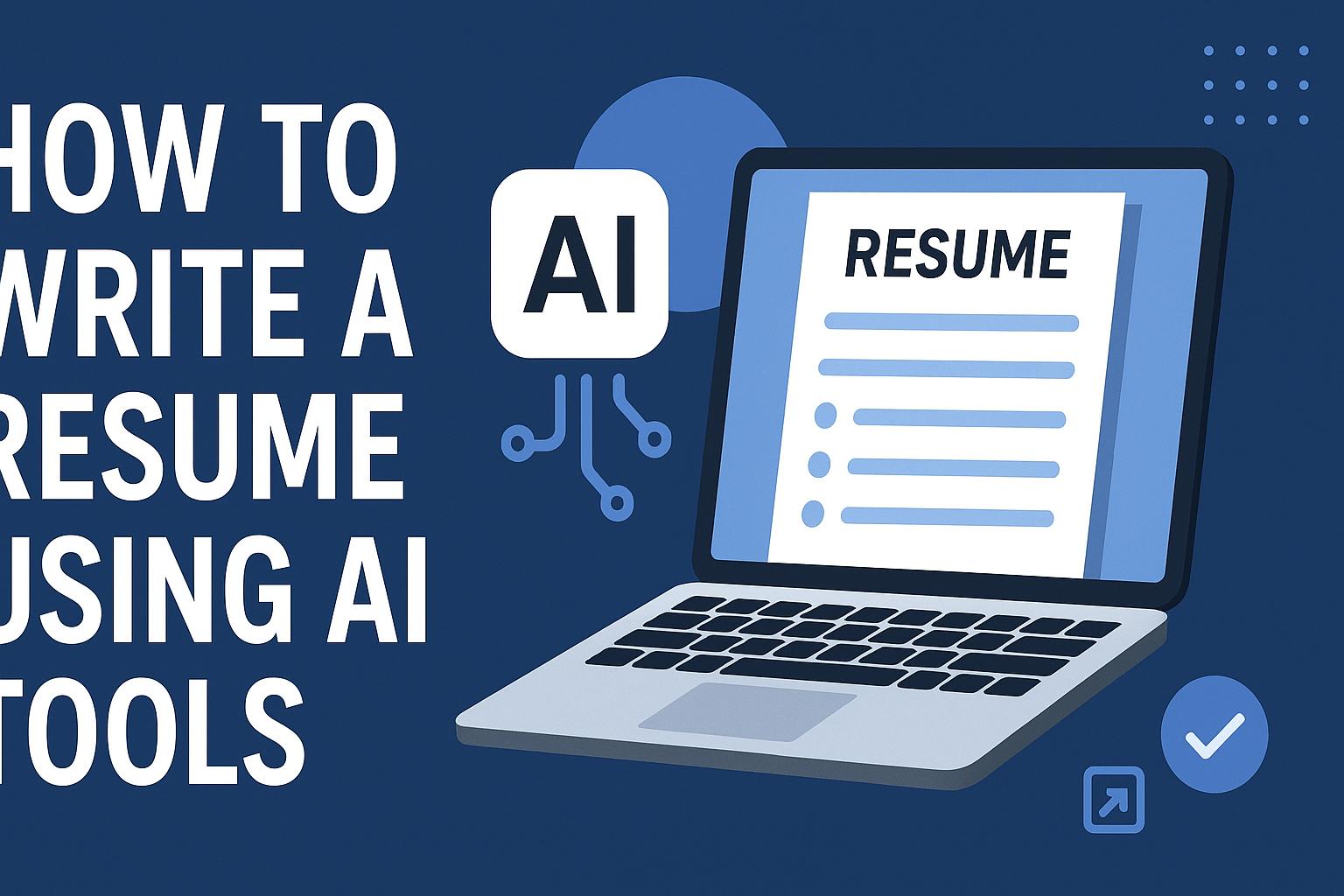Introduction
The job market in the United States is more competitive than ever. Recruiters receive hundreds of applications for each position, and a well-crafted resume can be your golden ticket to landing an interview. But writing a resume from scratch can be daunting, especially if you’re unsure about formatting, tone, or what recruiters really want to see.
That’s where AI resume writing tools come in. In this guide, we’ll explore how to use AI to write a resume that stands out, saves time, and gets results.
Why Use AI to Write Your Resume?
Before we dive into the “how,” let’s talk about the “why.” AI-powered tools can:
- Save hours by generating professional drafts in minutes.
- Suggest action verbs and keywords tailored to your industry.
- Format your resume to match ATS (Applicant Tracking System) requirements.
- Offer real-time grammar and clarity improvements.
- Give personalized tips based on your job target.
These benefits are particularly valuable in the U.S. job market, where employers use ATS software to scan resumes before they’re ever read by a human.
Step 1: Choose the Right AI Resume Tool
Not all AI tools are created equal. Some focus on formatting, while others excel at content generation. Here are a few popular options:
1. ResumAI by Kickresume
- Generates complete resumes based on your work history and target role.
- Integrates with LinkedIn for quick import.
- Offers industry-specific templates.
2. Rezi
- Specializes in ATS-friendly formatting.
- Highlights missing keywords based on job descriptions.
- Offers unlimited revisions.
3. ChatGPT (with Resume Prompting)
- Can generate tailored bullet points for specific roles.
- Offers flexibility for unique career paths.
- Works best when you provide detailed input.
Step 2: Gather Your Information
AI can’t invent your career history — you’ll need to provide:
- Work experience (job titles, companies, dates, responsibilities).
- Education (degrees, institutions, graduation dates).
- Skills (technical, soft skills, languages).
- Certifications (relevant to your field).
- Achievements (quantifiable results are best).
Having this ready will make AI-generated drafts more accurate and tailored.
Step 3: Use AI to Generate a Draft
Once you have your information, feed it into the AI tool of your choice.
For example, if you use ChatGPT, you might input:
“Write a professional resume for a marketing manager with 7 years of experience in digital campaigns, specializing in SEO and social media strategy. Highlight achievements such as increasing website traffic by 150%.”
AI will then produce a draft you can refine.
Step 4: Optimize for ATS and SEO
Just like websites use SEO, resumes use keywords. AI tools like Rezi can scan a job posting and match it with your resume to ensure:
- The job title appears exactly as listed.
- Key skills match the employer’s requirements.
- Industry-specific terms are included.
This increases your chances of passing ATS filters and reaching a recruiter’s desk.
Step 5: Edit and Personalize
AI is powerful, but your voice matters. Personalization tips:
- Replace generic phrases with specific examples.
- Add metrics: “Increased sales by 30%” is stronger than “Responsible for sales growth.”
- Keep tone professional but human.
- Make sure your formatting is clean, readable, and consistent.
Step 6: Get Feedback and Finalize
Before sending your resume:
- Use Grammarly or another AI editor to catch typos.
- Ask a friend or mentor to review it.
- Export in both PDF and Word formats (PDF is safest for preserving formatting).
Example AI-Enhanced Resume Workflow
| Step | AI Tool | Benefit |
|---|---|---|
| Content generation | ChatGPT | Fast draft tailored to your role |
| ATS optimization | Rezi | Ensures your resume passes screening |
| Formatting | Canva Resume | Professional, visually appealing templates |
| Proofreading | Grammarly | Polished, error-free text |
Best Practices for AI-Generated Resumes
- Always verify accuracy — AI may make assumptions.
- Keep one master resume you update regularly.
- Tailor each version to the specific job posting.
- Combine AI suggestions with your own industry knowledge.
Final Thoughts
AI tools have revolutionized the way professionals create resumes. By combining AI efficiency with human judgment, you can craft a resume that not only passes ATS filters but also impresses recruiters. In today’s U.S. job market, that’s the competitive edge you need.


Leave a Reply